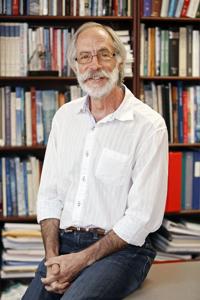Twenty-five years ago, eight Biospherians, four men and four women, took up residence inside Biosphere 2. Their stay lasted two years.
Now, a quarter century later, it’s clearer than ever how innovative and imaginative the concept behind Biosphere 2 was and still is.
Biosphere 2 is a tightly sealed glass and steel structure on slightly more than three acres of land near Oracle. Scientists there have created seven complete ecosystems, or biomes, that mirror those of Earth.
We are lucky to be the keepers of Biosphere 2. It is the largest experimental complex for environmental work, a site to test greenhouse technology and a place where one can imagine and investigate some of the extraordinary challenges of space exploration.
Biosphere 2 is also a place where we can study the mass balance of water in semiarid environments as global climate change progresses.
Specifically, we can study the effects of drought and increased heat on the rain forest, as well as other global environmental issues that result from changing climatic conditions.
In addition to being a hub of research, Biosphere 2 has become a place where teachers and students gather to learn and focus on science. We offer programs in which K-12 teachers create curricula for their classroom.
We have nationwide partnerships to educate at-risk high school students. And we offer focused, international student internships.
In the coming year, many events will celebrate Biosphere 2, including lectures from influential international scientists and policy makers. In May, One Young World will hold a meeting at Biosphere 2 in which 350 20- to 30-year olds will gather to discuss the way their communities deal with the environment.
In addition, our upcoming, popular Science Lecture Series will focus on global climate change. I am excited about the lectures in the series. They promise to be extraordinary. Please mark them in your calendar. They begin Monday at 7 p.m. and continue weekly through March 7.
I hope you enjoy this window into the world-class science and discoveries in the University of Arizona’s College of Science.




